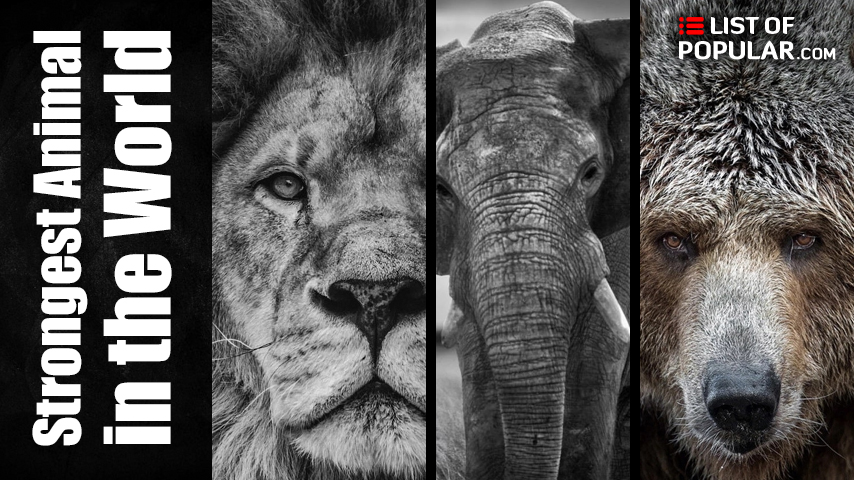1. Lion
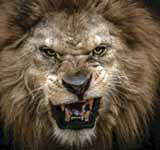
The lion is a mammal carnivore of the family of the Felidae and one of the five species of the genus Panthera. Wild lions live in increasingly dispersed and fragmented populations in sub-Saharan Africa and a small area in northwestern India. Males are very easy to distinguish by their mane, which makes their head one of the most widely known animal symbols in human culture. The lion is the largest living feline next to the tiger. With powerful limbs, a strong jaw, and eight-centimeter canine teeth, the lion can kill large prey. The weight of adult lions generally varies between 160-260 kg in males and 120-182 kg in females, lions tend to have a different size according to the environment and the area they occupy, which results in a variety of weights recorded.
2. Tiger
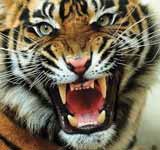
The tiger is a carnivorous mammal animal living in the forest. It is the largest and most powerful animal in its species. The tiger can be 13 feet long and weigh 400 kg. The scientific name of the tiger is Panthera tigris. Tiger has very good eyesight and amazing hearing and smell ability. They often attack from behind. The tiger has a muscular body with powerful forelimbs, a large head and a tail that is about half the length of its body. The gestation period is about three and a half months and 2-3 cubs are born at a time. In the wild, tigers feed primarily on large ungulates, although, like many other predators, tigers are opportunistic and do not despise small prey such as monkeys, peacocks, hares, and even fish.
3. Bear
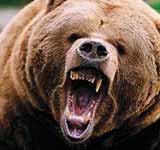
The bears or ursids are a family of mammals omnivores. They are large animals, generally omnivores since, despite their fearful teeth, they eat fruits, roots and insects, in addition to meat. However, the polar bear, due to the scarcity of other food sources, feeds almost exclusively on meat. With their heavy bodies and powerful jaws, bears are among the largest carnivores who live on Earth. A male polar bear weighs an average of 500 kg and reaches a height of up to 2.4 - 3 metres. Their sense of smell is very strong. Despite being heavy looking, bears can run fast and they also have good ability to climb trees and swim in water. They often make their home in caves or large pits on the ground.
4. Great White Shark
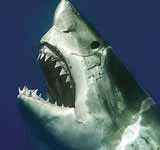
The white shark is a species of lamiform cartilaginous fish in the family Lamnidae (shark). It lives in the warm and temperate waters of almost all the oceans. The white shark has a massive, coil-shaped body and a blunt snout. The beak is wide and has characteristic triangular teeth with serrated edges. The great white shark grows on average about 4 to 5 meters long and about 680 to 1100 kilos. The maximum dimensions are about 5 to 6 meters and the maximum weight is about 2000 kilos. An adult specimen mainly hunts large prey. Favorite dishes include tuna, mackerel-like fish and swordfish. Occasionally, sea predators such as seals and sea lions, dolphins or smaller sharks are also eaten. The shark usually hunts alone, but when a blood trail floats in the water, several sharks can flock together.
5. Anaconda
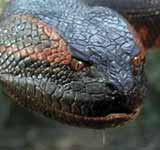
Anaconda is a semi-aquatic constrictor snake that lives in South America (Orinoco, Argentina, Venezuela, etc.). It is the largest snake in the world and can reach 10-12 m in length; he can swallow food almost three times the diameter of his body. Very large adult snakes even hunt large animals such as deer, Capybara (the largest rodent in the world), wild boar, etc. Anaconda is part of the order Eunectes. The order Eunectes is divided into two suborders: Eunectes murinus and Eunectes notaeus. In very rare cases, when the anaconda feels that it is in great danger, it regurgitates its prey (which can be twice as big as it), in order to get rid of the surrounding predators. The maximum age he can reach is 35 years. Anaconda is found in the basins of the Amazon and Orinoco rivers, in calm waters and swamps.
6. White Rhinoceros
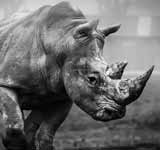
The white rhinoceros (Ceratotherium simum), also known as the broad-lipped rhinoceros, is a species of perissodactyl mammal in the Rhinocerotidae family and is the largest of the five living rhinoceros species and the largest contemporary land animal, apart from elephants. The white rhinoceros grows larger than the black rhinoceros. It grows 3.7 to 4 meters long. The tail is 80 to 100 centimeters long and the height at the withers is 170 to 185 centimeters. Males are a lot bigger and heavier than the females. Females become about 1400 to 2000 kilograms, males can weigh 2000 to 3600 kilograms.
7. Elephant
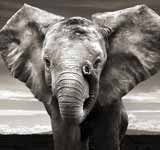
The elephants or Elephantidae are a family of mammals Placental of the order Proboscidea. Elephants are the largest land animals that exist today. The gestation period is twenty-two months, the longest in any land animal. The birth weight is usually 120 kg. They normally live fifty to seventy years, but ancient records document maximum ages of eighty-two years. The largest elephant that has been hunted, of which there is a record, weighed around 11,000 kg (Angola, 1956), reaching a height at the withers of 3.96 m, one meter higher than the average African elephant. With its trunk, an elephant can reach items at heights of up to 7 m (23 ft). When they get scared or angry they can run at speeds above 40 km/h. They can even pick up a pin from the ground by holding it between the lobes of the tube.
8. Gorilla
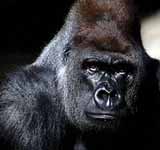
The Gorilla is a primate genus in the family of great apes (hominids). They are the largest living primates and the most pronounced leaf eaters among the great apes. Gorillas have a robust, stocky build. They are about 1.4 to 1.8 meters high standing, whereby they usually keep the knees slightly bent. Like all great apes, they are tailless. In terms of weight, they have a clear gender dimorphism: While females weigh 70 to 120 kilograms, males reach up to 230 kilograms. Despite reports to the contrary (some sources state up to 275 kg), animals with more than 200 kg in the wild are rare. Well-fed animals in human care, on the other hand, can become significantly heavier and weigh up to 350 kg. Eastern gorillas are generally slightly larger and heavier than western gorillas, they have a wider chest and appear stocky.
9. Crocodile
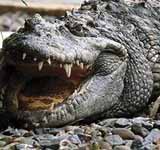
The Crocodylinae are a subfamily of the family real crocodiles (Crocodylidae). The group was first scientifically described by Georges Cuvier in 1807. The life expectancy of a crocodile can reach 100 years. Males weigh between 1000 and 1500 kg, and measure between an average of 6 and 7 meters in length. Females are much smaller than males, between 2.1 and 3.5 meters long, and weighing 500 kg. The largest crocodile which it is reported is 8.5 meters long and 1700 kilograms and was caught in Queensland in 1957. The marine crocodile has the most powerful bite in the animal kingdom. In 2004, a measurement of its bite force was made with a specimen of 4.5 meters, and the result was that when its jaws closed, provided with 66 teeth, it exerted a pressure of 1770 kg, the most powerful bite ever have measured to date.
10. Hippopotamus
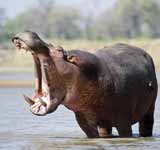
The hippopotamus is the largest and most common species in the hippopotamus family (Hippopotamidae). The other species is the pygmy hippopotamus (Hexaprotodon liberiensis). It is also one of the largest land mammals. The hippopotamus is easily recognizable by its barrel-shaped torso, huge mouth and teeth, body with smooth, almost hairless skin, stubby legs and large size. It is the third land animal by weight (between 1.5 to 3 tons), behind the white rhino (1.5 to 3.5 tons) and the two genera of elephants (3 to 9 tons). Older males reach much higher weights, reaching at least 3,200 kg and sometimes up to 4,500 kg. Its mouth is huge and its jaws can be opened at a 150 degree angle. Hippos are aggressive animals, adults are hostile even to crocodiles.
11. Komodo Dragon

The Komodo dragon (Varanus komodoensis), also called the Komodo monster, is a species of sauropsid in the family of the Varánids, endemic to some islands in central Indonesia. It is the largest lizard in the world, with an average length of two to three meters and a weight of about 70 kg. As a result of their size, they are the super predators of ecosystems in which they live. Although these lizards feed primarily on carrion, they also hunt and ambush their prey, which includes invertebrates, birds, and mammals. Komodo dragon has well-developed venom glands that produce a complex venom. For a long time, the toxic bite was thought to be due to the bacteria in the mouth. When suitable prey comes close to its ambush spot, it quickly attacks it by launching itself into the animal's belly or neck. It is able to locate its prey using its penetrating sense of smell, which can detect a dead or dying animal from a distance of up to 9.5 kilometers.

